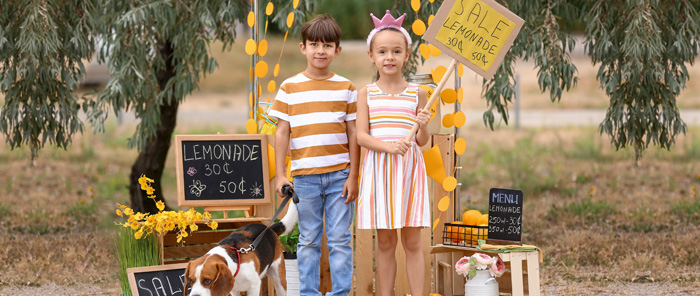Welcome back to Real Talk with Rachele, where we discuss all things disabled sex! This month, we’re looking at BDSM and kink practices.
This topic is always one of my favourites to look at because of my own personal interest. In my early days of understanding how my disability informed my sexuality, I often turned to kink as a way to explore because it felt separate from how I had explored sexuality previously. It offered me a new lens to explore my relationship to my body and brain, without relying on activities and understandings that I felt disconnected from. Kink and BDSM can be a way to explore new relationship dynamics and new ways to experience our bodies and help us break away from our previous understandings of sexuality and pleasure.
But kink and BDSM can be risky! It can be emotionally difficult, it can be physically demanding, and it can unlock new parts of ourselves that we maybe didn’t want unlocked in the first place. Because of this, I firmly believe that proper kink education is paramount to being able to do it safely! However, finding disability-specific kink education can be very difficult, and it can leave us in a situation where we may be in over our heads.
So for this month’s post, we’re going to do a little Kink and BDSM 101, but from someone who has the disabled lens at the forefront of their mind.
What is BDSM? What is kink?
BDSM is an acronym that stands for Bondage, Discipline, Dominance, Submission, Sadism and Masochism. The actual acts we choose to do differ between people, but in general the definitions are:
- Bondage: Being bound or binding someone else. This can be decorative or securing.
- Discipline: Involves elements of obedience, punishment and reward.
- Dominance/Submission: Elements of power play, sometimes shortened to dom/sub, the experience of playing with power, service, roles and control.
- Sadism: To derive pleasure, from inflicting pain, suffering, or humiliation on others.
- Masochism: To derive pleasure from one’s own pain, suffering, or humiliation.
Kink is a broad term that encompasses any form of sexual, sensual, or intimate behaviours that fall outside of societal norms around sex. It can encompass interests, practices, relationships and/or identities.
One of the reasons I feel so connected to the kink community is because of this relationship with societal norms around sex and pleasure. Disabled sexuality so often falls outside of these norms anyways, so even when I am not practicing kink, I feel a sort of kinship with kink practitioners. We even talked about this in our June webinar about intersections between queer and disabled identities.
The “rules” of engagement
While kink and BDSM are sort of related to breaking normative rules around sex and pleasure, there are also some generally agreed upon expectations surrounding engagement in these acts. Kink and BDSM carry risks, so ensuring some form of risk management is important in the practice!
Scene: The “scene” is essentially the container that the kink and/or BDSM activities take place. It separates the activities from the real world, where the activities would not be consensual or acceptable. Many practitioners create guidelines and signals about when a scene starts and stops to ensure there are clear boundaries around when certain behaviours and activities are allowed.
Safe words: Safe words (or gestures/signs) are pre-agreed upon signals or codes to cut into the scene. They can be used as a check in or a stopping point altogether. These words or signs need to be specific and easy to say/do to ensure everyone involved can use them. They should also be easily differentiated from words that would be common in the scene.
A common verbal safe word is the stoplight system where green means go, red means hard stop, and yellow/amber means pause for check in. Some people may assign something more specific to yellow, but it should stay consistent.
For scenes where someone does not have the ability to communicate verbally, a physical code is needed for this process. A personal favourite I recently learned from a rope practitioner was to set up one of those battery powered doorbell systems and put the speaker part in the room with you. The person who is not communicating verbally can hold the button component, and when a check in or hard stop is needed, they can press the button and the bell rings.
I love safe words/signs because they are useful outside of kink practices too! If you are not someone who communicates verbally, or if you have difficulty communicating verbally when you get worked up, a signal or code is a great option to keep things feeling safe and secure.
Negotiation: This refers to the scene-planning and consent process. It is meant to be collaborative and doesn’t happen only once. This process is important for deciding on the vibe of the scene and activities you want to do, safe words/codes/signs, safety and risk management procedures, aftercare practices (see below), and talking about any hard boundaries or triggers that might come up, and how to approach them. We’ll talk more about what can be part of a negotiation and how it might look later in this post.
Aftercare: Engaging in BDSM and kink can be intense on the body and mind, so we need opportunities to get back to our neutral state. Aftercare is the reset process that helps us return to our neutral.
Aftercare will look different for different people. Some people may require soft touch, massage, or other soft physical sensations, while others may require more verbal affirmations. The aftercare we need will be based on our general wants and needs, and the activities we were doing during the scene. For example, if we were doing something that involves bondage, part of our aftercare might include being removed or removing someone from that bondage set up.
Aftercare is important not just for our general reset process, but also for ensuring physical AND psychological safety. The behaviours or actions we do in a scene may be something we would never do in real life, but we can still feel guilt or shame or concern that we’ve harmed someone. Aftercare is just as important for someone in a dominant role as it is for someone in a more submissive role.
Setting up a scene
When I am going through the negotiation process, I like to ask a lot of questions to try to get a feel for what a scene may look like. The way I generally engage in kink leaves time and room for me to have multiple conversations with play partners before a scene takes place, but other (more experienced) practitioners may not need or have the luxury of long, drawn out conversations (i.e. at a play party).
However, when you are just starting out, I highly recommend a longer negotiation process. It gives you time to really think through your plans and ensure you and your partner(s) are on the same page.
When I am doing my negotiations, I am focused on learning information about the following:
- Desires, wants and needs (What do we want the scene to look like? What are we trying to get out of it? What activities or roles will we incorporate?)
- Boundaries and hard limits (What activities/words/experiences are absolutely off limits?)
- Safe words or codes/signals
- AND general signs of enjoyment, discontent, and needing to stop we can watch out for in case we hesitate on the safe word/code
- Trauma or triggers that may come up and what to do in that scenario
- Aftercare practices
If jumping into a negotiation feels intimidating, here are some steps you can follow to start out:
- Consider your own fantasies and offer them as suggestions. It may help to write them down to be able to share, and you can share them ahead of time so the other person has time to think about it.
- Ask for feedback or changes to the fantasy you proposed.
- Follow up with edits or new material based on the suggestions and check in to make sure the other person feels confident in the scene.
And the last consideration for your scene planning (but maybe the most important one) is safety considerations and gear. It’s hard to get into a list of safety considerations and gear you might want, because those will differ greatly depending on the activities you are choosing to do. So, in the end it becomes your job to thoroughly research and learn about the types of gear you need for a specific activity, and the safety considerations you need to be aware of to engage properly.
Resources
Since this post is meant to be an introduction to kink and BDSM, it cannot be the only resource you consult for your own exploration. This is meant to offer you the most basic information, so you feel better informed to look into other resources. TheDuchy is a rope-specific education platform, but they have compiled an excellent collection of wider kink resources. You can find that here: https://www.theduchy.com/education-list/#bdsm-books
Unfortunately, finding disability-centric kink education is still difficult, so I’ve found what I can for the time being:
Xan West is a disabled writer, especially of disabled erotica. Xan has also written on intersections of disability and BDSM and kink, and has compiled a list of those writings here:
https://xanwest.wordpress.com/kink-essays-and-resources/
—
My personal relationship to kink has allowed me to be more creative about my sexuality, but kink doesn’t have to be inherently sexual. Lots of people explore kink as an alternative avenue for intimacy that doesn’t involve sex at all, while others utilize it as part of their larger sexual practice. Ultimately, kink is whatever you make it, but there are guidelines that have been created by kink communities to help us manage risk and keep us as safe as possible.
Have you explored kink and BDSM in your own pleasure practice? Do you have ideas of how kink or BDSM has impacted your disabled experience? Let us know!
Our next and final topic for the Real Talk with Rachele series is about disability, sexuality and aging. How do you think aging will impact your sexuality? What worries you about aging with a disability? What excites you?
And as we reach the end of this series, are there topics you wish we covered or people you wish we spoke to? Do you have questions you still want answered? Are you interested in seeing more sexuality education in some way? Let us know in the contact form on the Real Talk homepage!


